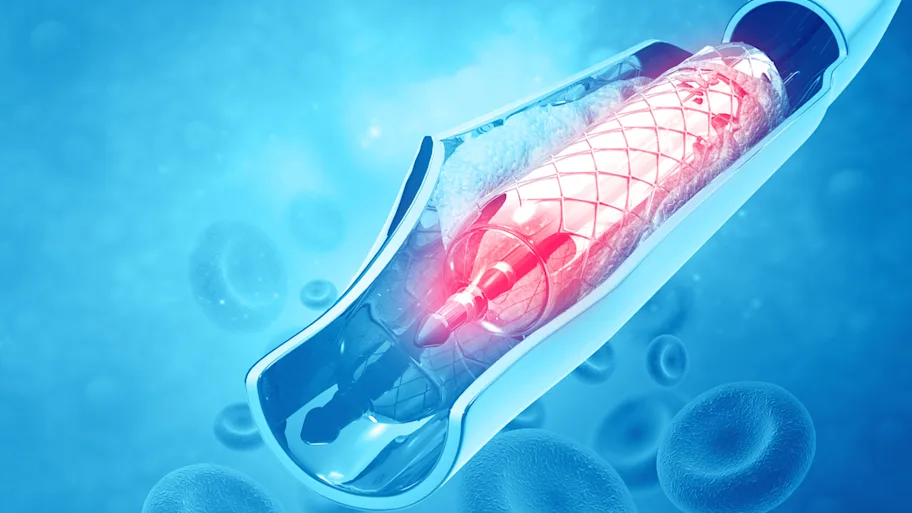
- Science news
- Frontiers news
- Prof Jeanette Erdmann joins Frontiers as Specialty Chief Editor
Prof Jeanette Erdmann joins Frontiers as Specialty Chief Editor

Frontiers in Cardiovascular Medicine is pleased to announce Professor Jeanette Erdmann as the Specialty Chief Editor for the section Cardiovascular Genetics and Systems Medicine. The section is open for submissions (see scope of section) and welcomes applications to the editorial board.
Jeanette Erdmann is Professor at the University of Lübeck and Director of the Institute for Integrative and Experimental Genomics in Lübeck. Prof. Erdmann has been one of the pioneers behind the “omics” revolution in cardiovascular genetics.
Cardiovascular disease (CVD) is the leading cause of death worldwide. A number of modifiable risk factors have been shown to increase the likelihood of developing CVD (such as smoking, physical inactivity, obesity, high blood cholesterol, poor diet and excessive alcohol consumption). But how important is the genetic predisposition?
It is well established that coronary artery disease (CAD) has a strong heritable basis, with around 50% of the risk for this condition thought to be genetic. Thus far, more than 55 risk loci have been identified by genome-wide association studies (GWAS). Interestingly, only around one-third of the CAD risk loci also show an association with a known cardiovascular risk factor (in particular, blood pressure and lipid traits), suggesting that other novel mechanisms mediate some of this genetic risk.
Identification of the genetic determinants of coronary artery disease and understanding how these affect risk independent of traditional risk factors, such as lipids, blood pressure, obesity or smoking, could provide new and exciting opportunities for identifying novel therapeutic targets.
What is the main focus of your research at the Institute for Integrative and Experimental Genomics?
The Institute for Integrative and Experimental Genomics (IIEG, www.iieg-luebeck.de) aims to better understand the genetic factors that lead to cardiovascular diseases, e.g., atherosclerosis and myocardial infarction, more commonly known as a heart attack. The University of Lübeck founded the IIEG in 2013. As the name of the institute suggests, we apply in silico (integrative) as well as in vitro and in vivo (experimental) methods to further unravel the genetics of cardiovascular diseases. There is an urgent need to progress beyond current state-of-the-art genetics by adding further levels of “omics” data and approaches that include markers of regulatory function. By integrating bioinformatics, epidemiological, clinical and experimental data, we propose to elucidate the functional basis of known genetic loci, as well as identify novel pathways to further understand the pathomechanisms leading to these life-threatening diseases.
To fulfil these overarching goals, the institute hosts an interdisciplinary as well as international research team of 30 scientists, PhD and MD students and technicians. The IIEG has its origins in a research group of Cardiovascular Genetics spearheaded by Prof. Heribert Schunkert and myself at the Medical Clinic II at the University Clinic of Schleswig-Holstein in Lübeck from 2004 to 2012. The IIEG is engaged in large networks of national and international collaborations (such as CARDIoGRAM, CARDIoGRAMplusC4D and GIANT) and actively participates in data and sample exchange. We are funded by national (BMBF and DFG) and international (EU and Leducq) agencies as well as local funding (University of Lübeck). Furthermore, we are part of the partner site Hamburg, Kiel, Lübeck within the DZHK e.V. (German Centre for Cardiovascular Research) and the Excellence Cluster “Inflammation at Interfaces”.
Over the past decade the rise of “omics” technologies (such as genomics, transcriptomics and proteomics) has revolutionized the way we approach scientific questions. How has this impacted the field of cardiovascular genetics?
I can easily demonstrate how the rise of “omics” technologies has impacted the field of cardiovascular genetics by telling you a little bit about my own research career. Twenty years ago, I started to work in the field of complex genetics by analysing the genetic variability of human serotonin receptor genes in the context of schizophrenia and bipolar affective disorder. The candidate gene approach, which we were following, was based on the association between genetic variation within pre-selected genes of interest and a given disease. I was among the first scientists in Germany to establish single strand conformation polymorphism (SSCP) for mutation detection, a method nobody is using anymore. Sequencing was performed by the Sanger method using radioactively labelled dideoxynucleotides and autoradiography, providing read lengths of about 200–300 bp per read. After successfully identifying a genetic variant, we used to genotype samples of 100–200 patients and controls (healthy subjects) to evaluate whether that specific genetic variants was associated to subjects with the diseases. Such candidate gene association studies were, at that time, the only approach we could think of to unravel the genetics of so-called complex diseases. You can find thousands of these candidate gene association studies in PubMed. Most of these studies have never been replicated, and only a few of these candidate genes appear in our recent large-scale genome-wide association studies.
The field changed dramatically in 2005 because, since then, we can apply large-scale genotyping methods to our samples. In less than 10 years, we have increased the sample size from 1,000 cases and controls to more than 200,000 in our latest paper, published just recently in Nature Genetics (Nikpay et al., 2015). Today, you can easily apply whole-exome sequencing or even whole-genome sequencing in large patient cohorts for a reasonable price. Moreover, recent technological advances in RNA profiling, metabolomics and methods allowing the study of epigenetic effects had a great impact on our field. Last, but not least, today we work so much more in collaboration than we did years ago. Altogether, this has led to enormous success in the field.
Can you tell us a little bit more about how you are applying genome-wide approaches to study CVD in the CARDIoGRAMplusC4D consortium?
We (and other colleagues engaged in the genetics of complex diseases) apply genome-wide association studies (GWAS) as the main tool for identification of genetic risk variants. A GWAS compares the DNA of people with (cases) or without (controls) a disease. For this comparison we analyse single nucleotide polymorphisms (SNPs), which are variations of single nucleotides in specific positions of the genome. We simultaneously genotype 1 million SNPs in thousands of patients and controls. If a variant is more often seen in patients, the SNP is said to be ‘associated’ with the disease. This associated SNP is then considered to mark a region of the human genome that influences the risk of disease. Unlike the candidate gene approach, which is limited to a specific region of the genome containing a gene of interest, GWAS allow for analysis of the whole genome. Nowadays, such GWAS are only successful if you meta-analyse data from thousands of patients and controls because most variants are common and confer only a small risk in the range of 5–10% or even less. In this constellation, you need a large number of patients to have enough power to detect an association signal with genome-wide significance. To conduct such meta-analyses of dozens of studies encompassing hundreds of thousands of samples and millions of markers, an umbrella such as the CARDIoGRAMplusC4D consortium is essential. We meet on a regular basis by telephone and discuss the progress of sub-projects; sometimes we even meet during international congresses such as the AHA or ESC. Over the years, we become familiar with each other and it is very inspiring to have these close collaborations.
Due to the scarcity of academic positions and the reduction of dedicated funding, research career is becoming more competitive and this is contributing to further widening of the gender gap in science. From your experience, how do you think this gap could be closed?
Yes, the gender gap in science is still a very important topic. Typically, in first-year university classes women comprise 50% of all the students enrolled, but this percentage steadily reduces to less than 10% among senior scientists. As it is well known, this is mainly due to the difficulty in combining the demands of a scientific career with family obligations, which prevents most women from continuing in research. The career disruption caused by having children can make it very difficult for women to compete in the research environment, where high competition for funding makes re-entry into research particularly difficult.
In recent years, the University of Lübeck has implemented an action plan to promote gender equality, while maintaining scientific excellence and expertise as a basic selection criterion. The University was certified as a “family-friendly University” in 2008. Our gender rebalancing action plan includes ensuring that job advertisements state the project’s commitment to equality and to a family-friendly working environment, and I am personally convinced that this encourages women to apply. Moreover, the University of Lübeck has promoted a structured mentoring program especially for women aiming for leading positions.
I think it is of utmost importance to establish good role models for female scientists. This can be done, alongside mentoring programs, by ensuring that females are equally considered for leadership roles within projects and considering the scope for women to give high profile presentations at meetings and conferences.
With these measures combined, we will raise the profile of female scientists and develop their career and networking opportunities. I am quite optimistic that this will help to close the gender gap over the coming years.
What motivated you to join Frontiers in Cardiovascular Medicine as a Specialty Chief and what do you hope to achieve?
First, I would like to say that I am really honoured to serve as a Specialty Chief at Frontiers in Cardiovascular Medicine. I believe this is a great opportunity to raise awareness for implementing systems medicine approaches in the field of cardiovascular disorders. The technologies developed over the past 10–15 years have actually changed the field dramatically. We now produce petabytes of data daily, and the challenge is to make sense out of this information. My hope is that the section “Cardiovascular Genetics and Systems Medicine” will evolve to be a major journal for publishing high-quality studies to understand the dynamics of cardiovascular disease processes and treatment efficacy, as well as their modulation by genetic, epigenetic and environmental influences and lifestyle determinants of the patient.
I know that, until now, systems medicine per se has not been a well-established and defined concept and might mean different things to different people. Thus, I hope that articles published in “Cardiovascular Genetics and Systems Medicine” will move the field forward and might set standards for future studies in the field of systems medicine.
I invite everyone working on the genetics and genomics of cardiovascular medicine to participate in the section by either submitting to the section or joining our editorial board, or even better, do both!
Aida Paniccia, PhDJournal Operations SpecialistFrontiers in Cardiovascular Medicine cardiovascularmedicine.editorial.office@frontiersin.org






